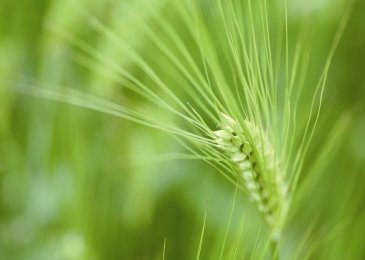Agribiotech to herald India's second green revolution
February 12, 2013 | Tuesday | News | By Narayan Kulkarni
Agribiotech to herald India's second green revolution
"Dreaded diseases like small pox and polio have been eradicated because of the technology. Somehow technologies in other areas are at a rapid speed like nano, pharma, and nuclear. There is a need for biotechnology to intervene into agriculture in a big way. Without technology we cannot increase our agricultural productivity," said Mr P Chengal Reddy, secretary general, Consortium of Indian Farmers Associations.
Speaking at a session on "Agribiotechnology to herald India's second green revolution" at Bangalore India Bio 2013, Mr Reddy said, "In India, crops are lost through flood, pest and insects. In the last 25-35 years, conventional biotech research have emerged. About 29 countries around the world like America, Brazil, Australia, and Canada are using genetically modified crops. About 97 percent of food in the US is genetically made and there have been no signs of any medical adverse effects in humans and animals. Our aim is that, in two years India should be the number one producer of Bt Cotton. However, biotech is not supported well in India and in the last three years no notable research has come up."
"Agribiotech is the need of the hour. There is a need to increase the productivity which can be done by using biotechnology. Without technology, we farmers are dead, said Mr Chengal Reddy, who coined groundnut as "Golden Nuggets", cotton as "Golden Fibre" and maize as "Golden Seed" and adding that, "Biotechnology is the golden technology."
Sharing his thoughts, Prof. M Mahadevappa, former vice chancellor, University of Agricultural Sciences, Dharwad, said, "India has the second largest "arable land" in the world after USA. India has diverse agro-climatic conditions. About 65 percent of rural population depends on agriculture as the main source of livelihood. Nevertheless, India has improved its food productivity from 522kg/hectare (1945-65) to 944kg/hectare (1956-75) and is now being called as "food sufficient" from "food deficient."
He further said, "The government has approved 17 GM crops of eight traits, which are virus resistant and bacteria resistant as in 2012. India is facing challenges such as increasing human population, decreasing soil fertility, and yield loss due to biotic stress. India is now exporting Bt cotton; there was a time when Bt cotton was imported to India. Golden rice, which is rich in β-carotene, offers a great solution for India as nearly 5000 children go blind every year because of β-carotene deficiency. Biotechnology offers great opportunities in agriculture in terms of value addition of food crops."
Dr KK Narayanan, managing director, Metahelix Life Sciences said, "To accept any technology like the biotech, the data is very important and has to be analyzed extensively. In India the first biotech crop which was commercialised is the Btcotton and today about 93 percent of farmers are growing Bt cotton. Bt cotton has tangible benefits like protection from worms and increased productivity. About 30,000 hectares of area was covered under Bt cotton in India in 2005 and 9.5 million hectares in 2008, which is a significant improvement and by the next 2-3 years India will be largest producer of cotton in the world. The average increase in production is about 1.2 percent and the increase in population is 1.8 percent annually. To increase the productivity we need the infusion of technology to achieve second green revolution and about 10 percent increase is needed every year in productivity to meet the growing demands of the population in 2030."










